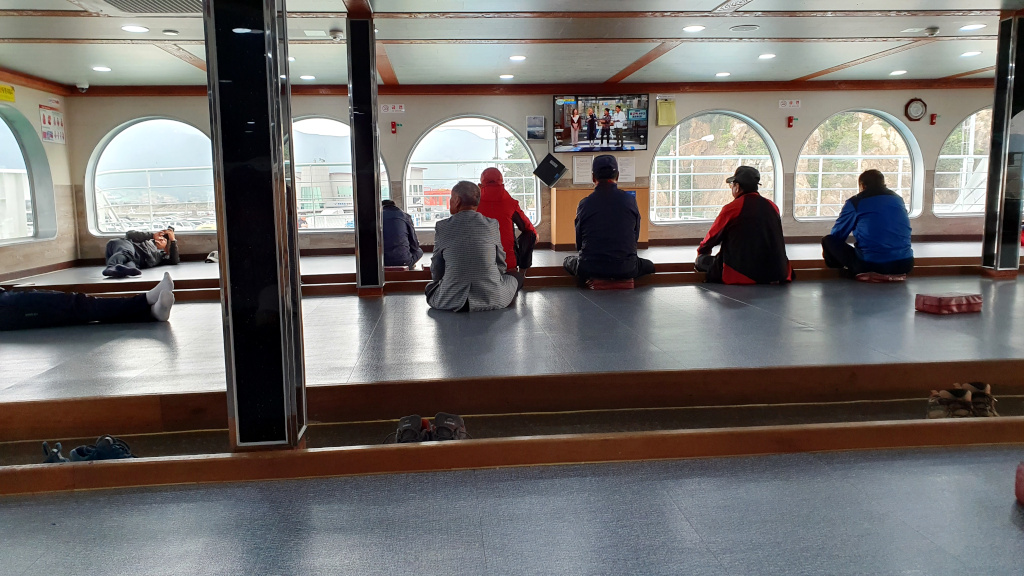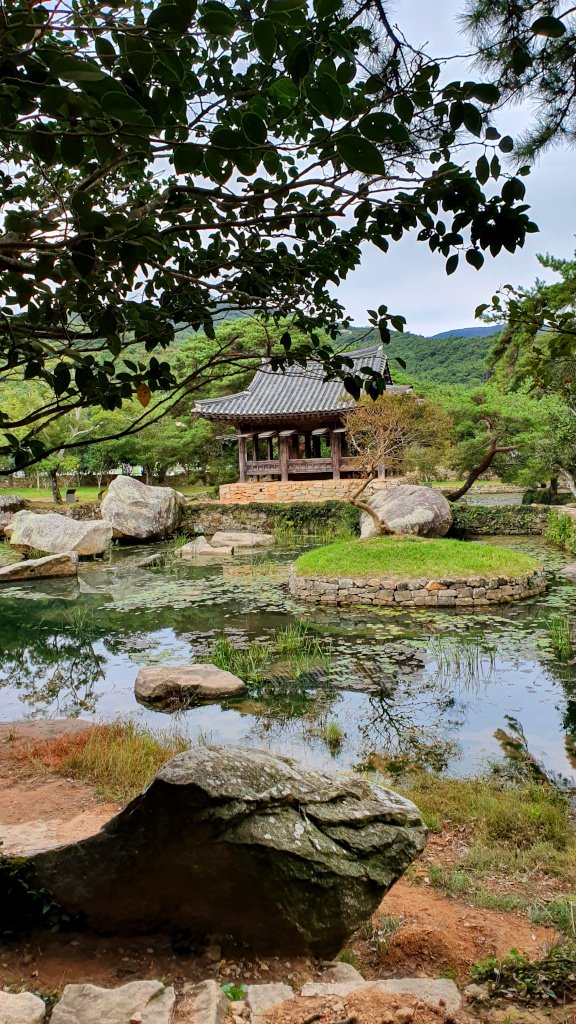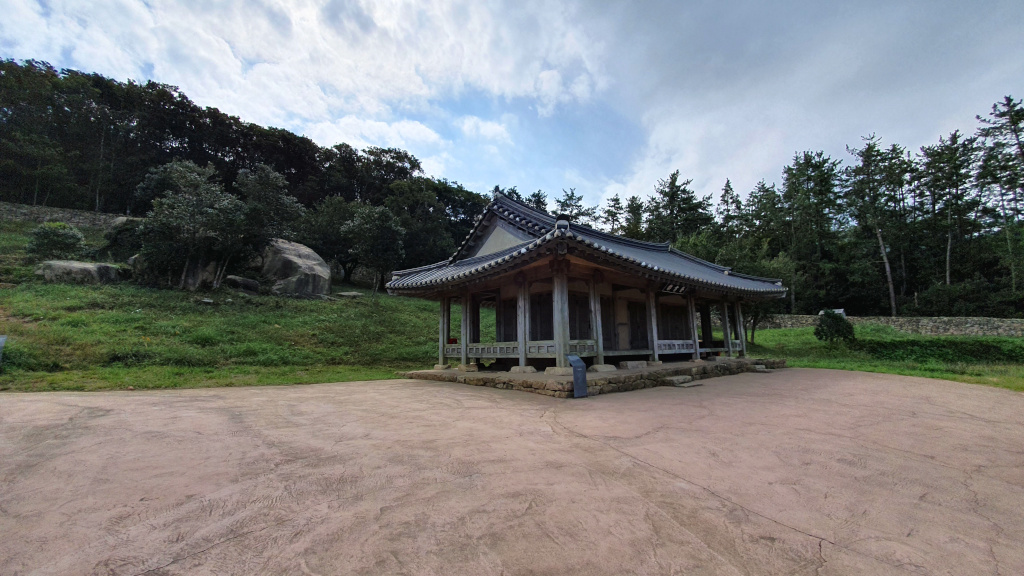Bogil Island in the southern part of South Korea is a maritime national park surrounded by seaweed farms. An island with hills, evergreen forests, and beautiful views.
It is also the most beautiful island of Wando, according to Wando’s Tourist website.
How to get to Bogil Island (Bogildo Island)

Head to Hwaheunpo Port on the western side of Wando to take a ferry to Bogil Island just 12 km off the coast of South Korea. The whole island is a maritime national park, wrapped in evergreen forest and high rising hills.
The ferry itself is the first attraction: join the locals and lie down on the heated floor for the duration of the fifty-minute journey to Dongcheon port on Nohwa Island.
It takes less than half an hour to drive from Dongcheon port to Bogil Island.
The ferry to and from Bogildo operates once every hour; the first one from Wando at 07:00 and the last one returning at 17:20 (October 2019).
If you come by car: park your car in the lane for Dongcheon port (동천) and walk to the ticket office to get your tickets. The one-way fee for a car and three people is around 30 EUR (33 USD).
By bus: take the shuttle bus from Wando bus terminal to Hwaheungpo Port (around 500 Korean Won).
Yunseondo Grove

The most well-known site to visit on Bogildo is Yunseondo Grove, a secluded garden in the center of the island designed using the representative pattern from the Joseon dynasty.
In Yunseondo Grove you can find Seyeonjeong garden and pavilion. The pavilion was built by Yun Seondo, a civil administrator and poet from the 1600s who moved to Bogil Island after he decided to live in seclusion following the Chinese invasion of Korea in 1636. Yun Seondo wrote many of his literary works in this pavilion.


The pavilion lies next to a square pond. You can walk around the pond to view the pavilion and garden from all sides. Especially the blueish water in the stream with big boulders makes for a nice view.

Moving away from the garden you can, depending on the season, walk on the path surrounded by the pink flowers that you see everywhere in South Korea. In the middle of the flower field is a wooden platform that is ideal for relaxing.
Goksudang and Nakseojae

Nearby you can also visit the traditional houses and library Goksudang and Nakseojae. Yun Seondo lived in Nakseojae from 1637 until his death in 1671.

Manggeut Observatory

Take the road on the left side of the island to go to Manggeut Observatory and Book-ri Dinosaur Egg Fossils Beach. From the observatory, you have a good view of the coastline of Bogil Island and of the surrounding islands.
Dinosaur Egg Beach


The Dinosaur Egg Beach is a very good place for some pictures of the sea with the egg-shaped stones on the beach as the focus of the picture.
Yesongri Observatory

On the right side of Bogil Island, you can stop for a picnic (bring your own lunch!) at Yesongri Observatory while watching the harbor with fishing boats and seaweed farms. This is a very nice spot.
Yesongri Beach
A beach next to protected pine trees and many types of plants like silver magnolia and camellia trees.
Tongri beach

Tong-ri beach is popular among the young. From the beach, you can see many archipelagic islands.
Jungri Beach
Jung-ri beach is near Tong-ri beach. The pine trees embracing this beach are hundreds of years old.
Song Si-yeol writing rock

Also on the eastern side of Bogildo you can visit Song Si-yeol writing rock to see the poem written on the rock. I was very lucky with the weather at this part of my trip: the sky was growing dark, but the sun was still shining and the yellow rocks of the cliff were illuminated against a very bright blue/green sea. In other words: the view here is beautiful.
Cafes and restaurants on Bogil Island and Nowha Island
Some practical tips: when I visited none of the restaurants and cafes on Bogil Island (if any) were open. So make sure to bring provisions. Across the bridge, in Nohwa’s Imok port, you can find many restaurants and cafes.
Read more about this area
I visited Bogil Island on my second roundtrip in South Korea. Read more about things to do in Wando, Gangjin and Mokpo in my itinerary that focuses on the lesser-known south and west of South Korea.
You can find all places mentioned in this post on my South Korea itinerary map.







